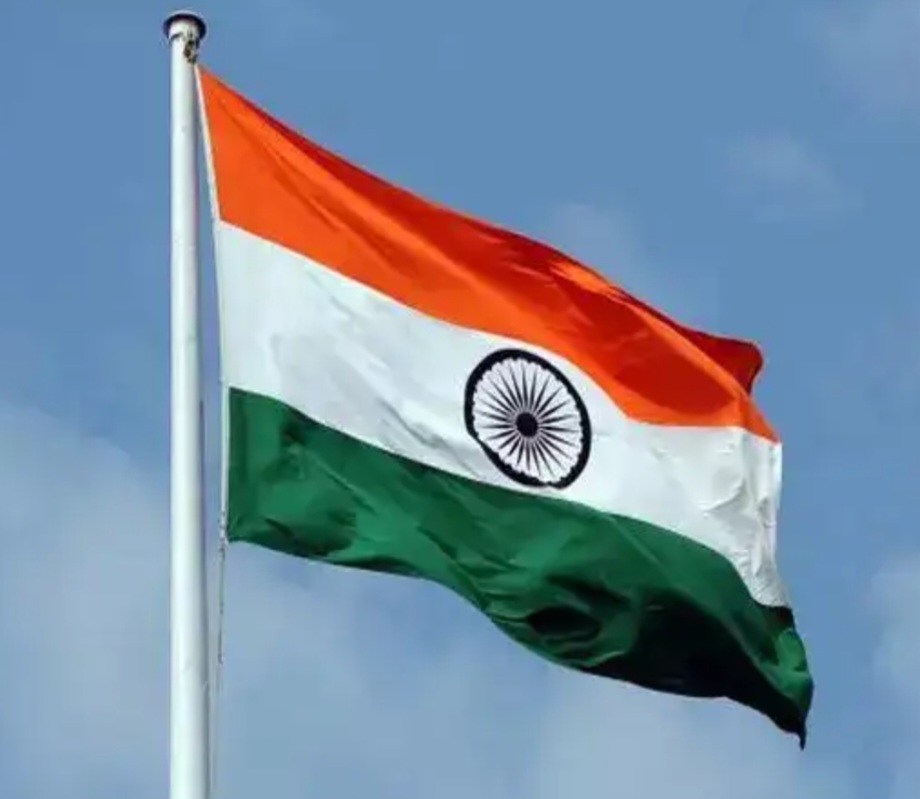By: Kumar Aryan, Research Analyst, GSDN

India’s pursuit of defence self-reliance represents a transformative strategic shift that has fundamentally restructured the nation’s military-industrial ecosystem. The Atmanirbhar Bharat (Self-Reliant India) initiative, announced by Prime Minister Narendra Modi on May 12, 2020, has accelerated this transformation, positioning India as an emerging global defence manufacturing hub with substantial indigenous capabilities and growing export competitiveness.
Historical Context and Strategic Framework
India’s defence self-reliance journey began with the establishment of the Defence Research and Development Organisation (DRDO) in 1958. However, early decades were marked by limited technological breakthroughs and continued import dependence. According to Stockholm International Peace Research Institute data, India remained the world’s largest arms importer between 2019-2023, accounting for 9.8 percent of global arms imports, though representing a decrease from 11 percent in the previous period.
The strategic transformation gained momentum with the Make in India initiative launched on September 25, 2014. The Defence Production and Export Promotion Policy 2020 established clear objectives: achieving turnover of US$ 25 billion in aerospace and defence goods by 2025, including US$ 5 billion in exports. The Defence Acquisition Procedure 2020 prioritized the ‘Buy Indian-Indigenously Designed, Developed and Manufactured’ category, ensuring preferential treatment for domestic systems and creating predictable demand for Indian manufacturers.
Remarkable Production Growth and Export Success
Official Ministry of Defence data reveals unprecedented growth in defence production, reaching a record US$ 18.1 billion in Financial Year 2024-25, representing an 18.9 percent increase from the previous year’s US$ 15.2 billion. This demonstrates consistent upward trajectory, with production increasing by 91 percent since FY 2019-20 when it stood at US$ 9.5 billion.
The sectoral composition shows balanced participation between public and private sectors. Defence Public Sector Undertakings contributed approximately 77 percent of total production valued at US$ 13.9 billion, while private sector contribution reached US$ 4.2 billion, representing 23 percent of total output and marking an increase from 21 percent in FY 2023-24.
Defence exports have demonstrated even more dramatic growth, surging from US$ 83 million in FY 2013-14 to US$ 2.85 billion in FY 2024-25, representing a remarkable 34-fold increase. The Department of Defence Production issued 1,762 export authorizations in FY 2024-25, compared to 1,507 in the previous year. India now exports defence equipment to over 100 countries, with primary buyers including the United States, France, Armenia, and several Southeast Asian nations.
Indigenous Platform Achievements
Light Combat Aircraft Tejas Program: The Tejas represents India’s most significant achievement in indigenous fighter aircraft development. Developed by the Aeronautical Development Agency with Hindustan Aeronautics Limited (HAL), the aircraft features indigenous content of 59.7 percent by value and 75.5 percent by line replacement units. HAL has delivered 40 Tejas aircraft to the Indian Air Force, with orders for 123 Tejas Mk1A aircraft worth US$ 6.2 billion placed in March 2021.
BrahMos Supersonic Cruise Missile System: The BrahMos missile system, developed through Indo-Russian collaboration, exemplifies successful international cooperation in advanced defence technology. With Mach 2.8 speed and 800-kilometer range in recent variants, BrahMos has generated substantial export orders, including US$ 374.9 million contract with Philippines in January 2022 and US$ 100 million deal with Indonesia.
Arjun Main Battle Tank Program: The Arjun Mk1A, developed by DRDO’s Combat Vehicles Research and Development Establishment, incorporates 72.8 percent indigenous content and features advanced fire control systems and battlefield management capabilities. The Indian Army placed orders for 124 Arjun Mk1A tanks in May 2021, valued at US$ 1.38 billion, establishing comprehensive supply chains involving over 200 Indian vendors.
Advanced Light Helicopter Dhruv: The HAL Dhruv program demonstrates India’s rotorcraft capabilities, with over 380 helicopters produced for domestic and export markets, accumulating more than 340,000 flying hours. The Dhruv has been exported to Ecuador, Mauritius, Nepal, and Suriname, achieving 68 percent indigenous content and spawning derivative programs including Light Combat Helicopter and Light Utility Helicopter.
Policy Reforms and Investment Liberalization
Foreign Direct Investment liberalization has been instrumental in attracting international technology and capital. The FDI limit in defence manufacturing under automatic route increased from 49 percent to 74 percent in September 2020, while 100 percent FDI is permitted under government approval for cases involving modern technology access.
According to Department for Promotion of Industry and Internal Trade data, 46 joint ventures and companies have received foreign investment approval in the defence sector. The Strategic Partnership model, notified in May 2017, has established frameworks for long-term partnerships between Indian companies and global original equipment manufacturers for programs including Project-75I submarines and naval utility helicopters.
Innovation Ecosystem and Technology Transfer
The Innovations for Defence Excellence (iDEX) initiative, launched in April 2018, has emerged as a transformative platform for engaging startups and MSMEs. With budgetary support of US$ 60.2 million for 2021-22 to 2025-26, iDEX provides grants up to US$ 180,000 for prototype development. As of December 2023, iDEX had signed 300 contracts with startups, supporting development across artificial intelligence, quantum technologies, autonomous systems, and advanced materials.
The Defence Research and Development Organisation has facilitated over 4,000 technology transfers to Indian industry, covering materials, manufacturing processes, and complete systems. Recent transfers include advanced materials technologies: high-strength radome manufacturing to Bharat Heavy Electricals Limited, DMR-1700 grade steel to Jindal Steel and Power Limited, and specialized steel technologies to Bhilai Steel Plant for naval shipbuilding applications.
DPSU Transformation and Performance
Defence Public Sector Undertakings have undergone significant transformation. Hindustan Aeronautics Limited achieved Maharatna status on October 13, 2024, providing enhanced financial autonomy including ability to invest up to 15 percent of net worth in projects and up to US$ 602 million in foreign ventures without government approval.
HAL’s financial performance exemplifies DPSU transformation, with annual turnover reaching US$ 3.4 billion and net profit of US$ 914 million in FY 2023-24. The company’s order book stands at US$ 8.9 billion, providing revenue visibility for 3-4 years. Bharat Electronics Limited reported turnover of US$ 2.1 billion with order book exceeding US$ 6 billion, establishing capabilities in radars, electronic warfare systems, and communication equipment.
Import Reduction and Strategic Autonomy
The implementation of positive indigenisation lists has been central to reducing import dependence. Five comprehensive lists comprising over 5,500 items have been notified, placing time-bound import embargos. The fifth list, notified in July 2024, includes 346 items with embargo timelines extending from December 2024 to December 2030.
According to Ministry of Defence data, over 12,300 defence items have been indigenised in the past three years, with DPSUs placing orders worth US$ 913 million on domestic vendors. India’s arms imports decreased by 9.3 percent between 2015-19 and 2020-24 periods according to SIPRI data, reflecting increasing domestic manufacturing capabilities.
Infrastructure Development and Industrial Corridors
The Defence Industrial Corridors in Uttar Pradesh and Tamil Nadu represent strategic manufacturing ecosystem development. The UP corridor, spanning Lucknow, Kanpur, Jhansi, Chitrakoot, Aligarh, and Agra, has attracted investment commitments exceeding US$ 2.4 billion from over 250 companies. The Tamil Nadu corridor encompasses Chennai, Hosur, Salem, Coimbatore, and Tiruchirappalli, facilitating investments worth US$ 1.8 billion and creating employment for over 35,000 people.
Plans for additional corridors in Maharashtra, Karnataka, and Assam are in advanced stages, leveraging regional industrial strengths and providing enhanced geographical distribution of defence manufacturing capabilities.
Economic Impact and Future Roadmap
The defence manufacturing sector’s economic impact extends beyond direct production. According to Confederation of Indian Industry estimates, every dollar of defence production generates US$ 2.5 in economic activity through multiplier effects. The sector directly employs over 850,000 people and supports indirect employment for approximately 2.5 million people across supply chains.
The government has established ambitious targets: achieving US$ 36 billion in defence production and US$ 6 billion in defence exports by 2029. The Advanced Medium Combat Aircraft program, launched in October 2022, aims to develop twin-engine fighter aircraft with indigenous content exceeding 80 percent, representing India’s most ambitious aerospace initiative.
Challenges and Strategic Outlook
Despite remarkable progress, challenges remain in advanced aero-engine technology, high-end semiconductors, and specialized materials. The government has initiated specific programs including the Semiconductor Mission and aero-engine development initiatives to address technology gaps. Supply chain resilience requires continued investment in Tier-2 and Tier-3 suppliers through Production Linked Incentive schemes.
Human capital development remains critical, with partnerships between industry and premier educational institutions being strengthened to address specialized skill requirements. Export competitiveness requires continuous technology upgrades, cost optimization, and after-sales support capabilities through defence export promotion organizations.
Conclusion
India’s defence self-reliance transformation demonstrates remarkable success across production growth, export expansion, and indigenous capability development. The 91 percent production growth since FY 2019-20 and 34-fold export increase since FY 2013-14 validate the strategic approach. Success of flagship programs including Tejas aircraft, BrahMos missiles, and ALH Dhruv helicopters provides credible evidence of India’s design and manufacturing capabilities.
The transformation of DPSUs from assembly-focused entities to innovation-driven organizations, combined with growing private sector participation and startup ecosystem engagement, establishes a robust foundation for sustained growth. India’s progress toward becoming a global defence manufacturing hub by 2047 appears achievable based on current trajectory and institutional capabilities.
This strategic transformation extends beyond defence manufacturing to encompass technological sovereignty, economic growth, and enhanced strategic autonomy. India’s success in defence self-reliance strengthens national security while positioning the nation as a significant contributor to global defence technology development, representing one of the most significant strategic achievements in India’s post-independence history.

About the Author
Kumar Aryan is an analytical and results-oriented postgraduate from Symbiosis School of International Studies (SIU) with a Master’s in International Relations, Global Security, and International Business Strategy. He possesses a strong understanding of geopolitics and economics, expertise in research and data-driven strategy, and proven leadership in team management and is experienced in market intelligence, data analysis, and cross-cultural engagement.


Such a well written piece, and very informative.
It was a very detailed and insightful piece on India’s defence. I was really impressed by the clarity and depth of your understanding towards it. Amazing indeed.